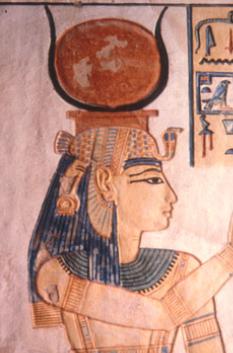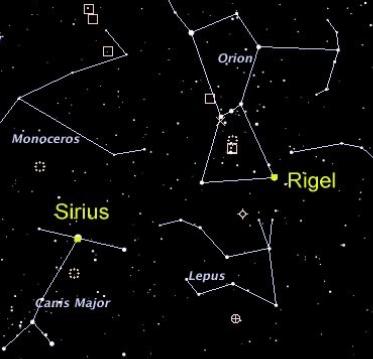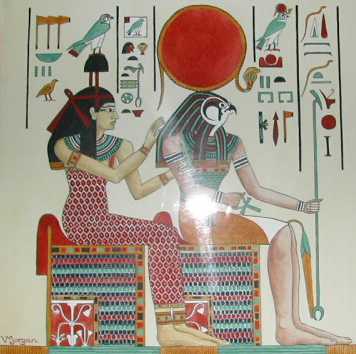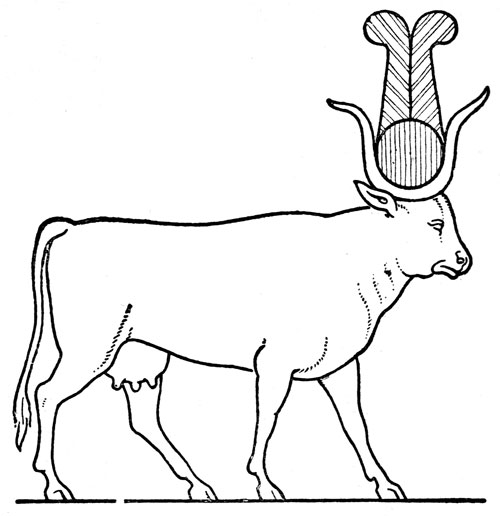
Hathor
Hathor is one of the most ancient Egyptian goddesses. She was known as "the Great One of Many Names" and her titles and attributes are so numerous that she was important in every area of the life and death of the ancient Egyptians. It is thought that her worship was widespread even in the Predynastic period because she appears on the Narmer palette. However, some scholars suggest that the cow-headed goddess depicted on the palette is in fact Bat (an ancient cow goddess who was largely absorbed by Hathor) or even Narmer himself. However, she was certainly popular by the Old Kingdom as she appears with Bast in the valley temple of Khafre at Giza. Hathor represents Upper Egypt and Bast represents Lower Egypt.
She was originally a personification of the Milky Way, which was considered to be the milk that flowed from the udders of a heavenly cow (linking her with Nut, Bat and Mehet-Weret). As time passed she absorbed the attributes of many other goddesses but also became more closely associated with Isis, who to some degree usurped her position as the most popular and powerful goddess. Yet she remained popular throughout Egyptian history. More festivals were dedicated to her and more children were named after her than any other god or goddess. Her worship was not confined to Egypt and Nubia. She was worshipped throughout Semitic West Asia, Ethiopian, Somlia and Libya, but was particularly venerated in the city of Byblos.

She was a sky goddess, known as "Lady of Stars" and "Sovereign of Stars" and linked to Sirius (and so the goddesses Sopdet and Isis). Her birthday was celebrated on the day that Sirius first rose in the sky (heralding the coming innundation). By the Ptolemaic period, she was known as the goddess of Hethara, the third month of the Egyptian calendar.
As "the Mistress of Heaven" she was associated with Nut, Mut and the Queen. While as "the Celestial Nurse" she nursed the Pharaoh in the guise of a cow or as a sycamore fig (because it exudes a white milky substance). As "the Mother of Mothers" she was the goddess of women, fertility, children and childbirth. She had power over anything having to do with women from problems with conception or childbirth, to health and beauty and matters of the heart. However, she was not exclusively worshipped by women and unlike the other gods and goddesses she had both male and female priests.

Hathor was also the goddess of beauty and patron of the cosmetic arts. Her traditional votive offering was two mirrors and she was often depicted on mirrors and cosmetic palettes. Yet she was not considered to be vain or shallow, rather she was assured of her own beauty and goodness and loved beautiful and good things. She was known as "the mistress of life" and was seen as the embodiment of joy, love, romance, perfume, dance, music and alcohol. Hathor was especially connected with the fragrance of myrrh incense, which was considered to be very precious and to embody all of the finer qualities of the female sex. Hathor was associated with turquoise, malachite, gold and copper. As "the Mistress of Turquoise" and the "lady of Malachite" she was the patron of miners and the goddess of the Sinai Peninsula (the location of the famous mines). The Egyptians used eye makeup made from ground malachite which had a protective function (in fighting eye infections) which was attributed to Hathor.
She was the patron of dancers and was associated with percussive music, particularly the sistrum (which was also a fertility fetish). She was also associated with the Menit necklace (which may also have been a percussion instrument) and was often known as "the Great Menit". Many of her priests were artisans, musicians, and dancers who added to the quality of life of the Egyptians and worshipped her by expressing their artistic natures. Hathor was the incarnation of dance and sexuality and was given the epithet "Hand of God" (refering to the act of masturbation) and "Lady of the Vulva". One myth tells that Ra had become so despondent that he refused to speak to anyone. Hathor (who never suffered depression or doubt) danced before him exposing her private parts, which caused him to laugh out loud and return to good spirits.

She took the form of a woman, goose, cat, lion, malachite, sycamore fig, to name but a few. However, Hathor's most famous manifestation is as a cow and even when she appears as a woman she has either the ears of a cow, or a pair of elegant horns. When she is depicted as entirely a cow, she always has beautifully painted eyes. She was often depicted in red (the color of passion) though her sacred color is turquoise. It is also interesting to note that only she and the dwarf god Bes (who also had a role in childbirth) were ever depicted in portrait (rather than in profile). Isis borrowed many of her functions and adapted her iconography to the extent that it is often difficult to be sure which of the two goddesses is depicted. However, the two deities were not the same. Isis was in many ways a more complex deity who suffered the death of her husband and had to fight to protect her infant son, so she understood the trials and tribulations of the people and could relate to them. Hathor, on the other hand, was the embodiment of power and success and did not experience doubts. While Isis was merciful, Hathor was single minded in pursuit of her goals. When she took the form of Sekhmet, she did not take pity on the people and even refused to stop killing when ordered to do so.